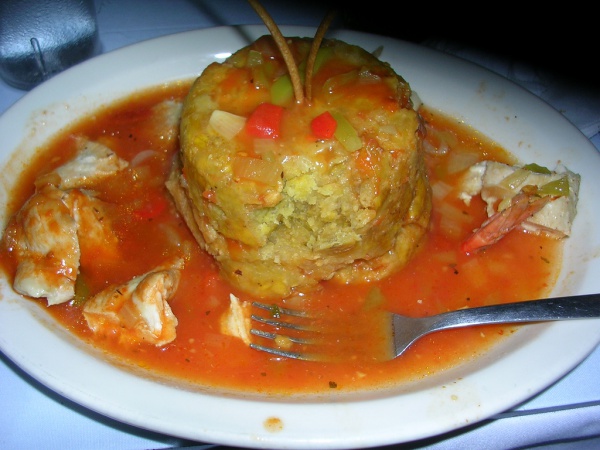Facts About Mofongo
Mofongo is a cherished Puerto Rican dish centered around fried plantains. To prepare it, the plantains are fried and then mashed with salt, garlic, broth, and olive oil to create a dense ball that absorbs a myriad of delectable flavors. It's often stuffed with ingredients such as pork cracklings, bacon, vegetables, chicken, shrimp, beef, or even octopus. Mofongo is typically served alongside fried meat and accompanied by a bowl of chicken broth soup.
The origins of mofongo can be traced back to West African fufu, though it has evolved over time with influences from Spanish and Taíno cultures. The first known mention of mofongo in a Puerto Rican cookbook was in 1859, in "El Cocinero Puertorriqueño." While it evolved from fufu, mofongo has incorporated distinct Caribbean flavors and ingredients. The practice of frying comes from African culinary traditions, while Spanish staples like pork, garlic, broth, and olive oil are integral to Puerto Rican cuisine.
There are numerous variations of mofongo, including those made with cassava, taro, eddoe, breadfruit, or a mix of plantains. There are also stuffed versions like camarofongo and mofongo relleno. During Thanksgiving, you might even come across a special version called "Pavochon." Mofongo's popularity has transcended Puerto Rico, particularly among Dominicans in New York City, and it has gained traction in upscale Latin and Pan-Latin restaurants.
There is some debate about the dish's origins. Some Dominicans claim mofongo as their own, while others acknowledge its Puerto Rican roots. Mofongo has permeated popular culture, making appearances on television shows and being mentioned in songs. Renowned chefs like Guy Fieri and Anne Burrell have praised the dish, helping to spread awareness of its rich and flavorful profile.
